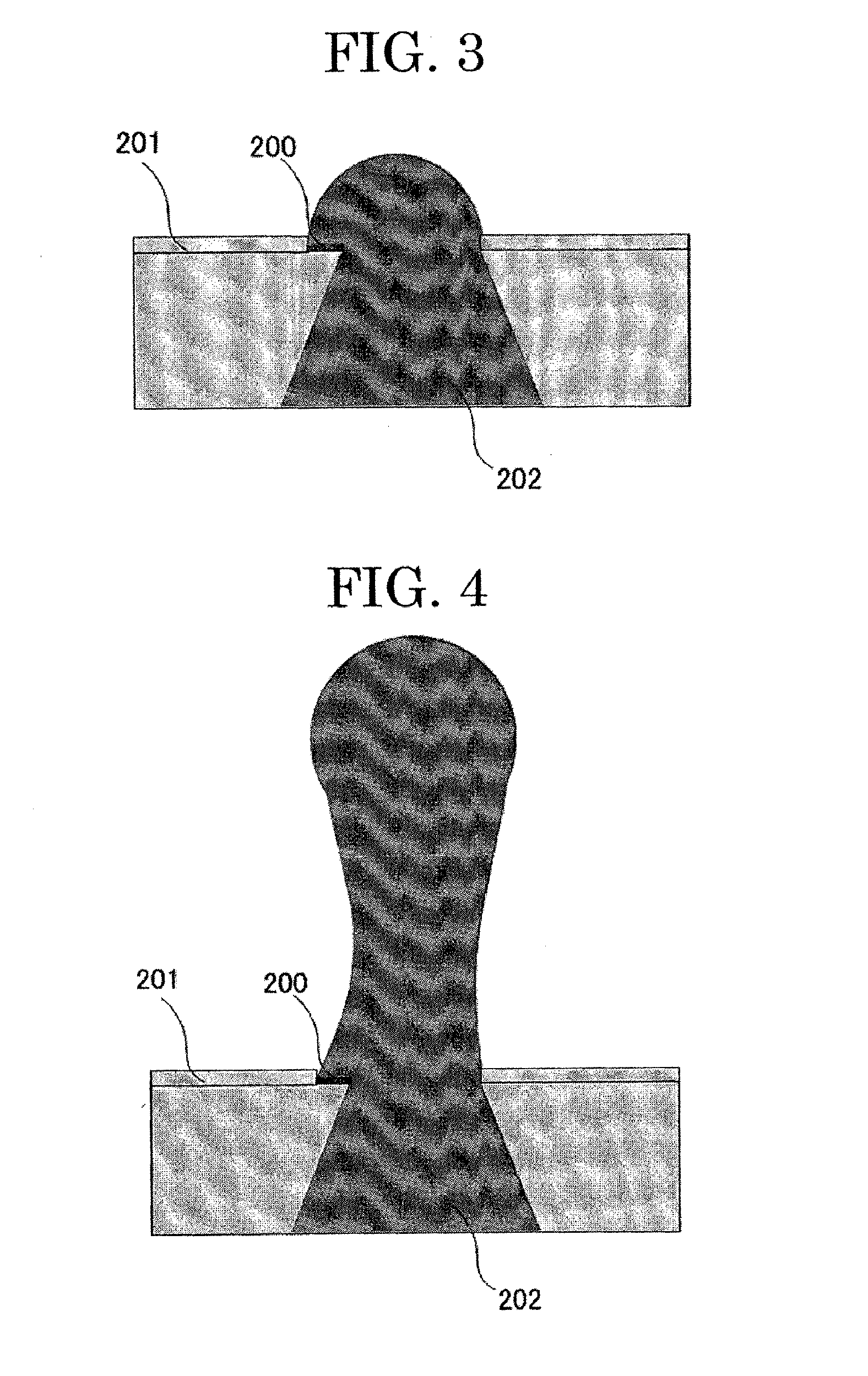Inkjet recording method and inkjet recording device
a recording method and inkjet technology, applied in the field of inkjet recording method and inkjet recording device, can solve the problems of overflow of ink from an outlet, poor water resistance and weather resistance of printed matter printed with water-soluble dye, poor water resistance and weather resistance of water-soluble dye, etc., to achieve excellent image, reduce static surface tension, and reduce the effect of aging
- Summary
- Abstract
- Description
- Claims
- Application Information
AI Technical Summary
Benefits of technology
Problems solved by technology
Method used
Image
Examples
production example 1
Preparation of Pigment Dispersion
Dispersion Production Example 1
Preparation of Cyan Dispersion
[0276]A 1 L-flask equipped with a mechanical stirrer, a thermometer, a nitrogen-inlet tube, a reflux tube and a dropping funnel, which had been sufficiently purged with nitrogen gas, was charged with styrene (11.2 g), acrylic acid (2.8 g), lauryl methacrylate (12.0 g), polyethylene glycol methacrylate (4.0 g), styrene macromer (4.0 g) (manufactured by TOAGOSEI CO., LTD., product name: AS-6), and mercaptoethanol (0.4 g), followed by heating to 65° C. Next, a mixed solution of styrene (100.8 g), acrylic acid (25.2 g), lauryl methacrylate (108.0 g), polyethylene glycol methacrylate (36.0 g), hydroxylethyl methacrylate (60.0 g), styrene macromer (36.0 g) (manufactured by TOAGOSEI CO., LTD., product name: AS-6), mercaptoethanol (3.6 g), azobis methylvaleronitrile (2.4 g), and methyl ethyl ketone (18 g) was added dropwise into the flask for 2.5 hours.
[0277]Thereafter, a mixed solution of azobis m...
production example 2
Ink Preparation Example
[0285]Ink Preparation Examples 1 to 18 were produced according to formulations described in Tables 1 to 3 using pigment dispersions of Dispersion Production Examples 1 to 4.
[0286]Specifically, a water-soluble organic solvent, a surfactant, a foam inhibitor (defoaming agent), a penetrating agent, and ion-exchanged water were mixed in this order, following by stirring for 30 min. Then, the pigment dispersion produced in any of Dispersion Production Examples 1 to 4 was added thereto, followed by stirring for 30 min and filtering through a membrane filter (pore diameter: 0.8 μm) to thereby obtain the ink.
TABLE 1Ink Preparation Example123456DispersionC18.010.0ProductionExample 1DispersionM27.012.0ProductionExample 2DispersionY18.0ProductionExample 3DispersionK26.0ProductionExample 4SurfactantSurfactant A0.020.020.020.020.040.04Surfactant BSurfactant CSurfactant DWater-SolubleGlycerin8.08.08.010.06.06.0Organic3-methyl-1,3-butanediol23.0Solvent1,3-butanediol1,6-hexan...
preparation examples 19 to 49
Ink Preparation Examples 19 to 49
[0322]Ink Preparation Examples 19 to 49 were produced according to formulations described in Tables 7 to 12 using the cyan dispersion, the magenta dispersion, the yellow dispersion, and the black dispersion of Dispersion Production Examples 1 to 4.
[0323]Specifically, (1) a water-soluble organic solvent, (2) a surfactant, (3) a foam inhibitor (defoaming agent), (4) a penetrating agent, and (5) ion-exchanged water were mixed in this order according to compositions described in Tables 7 to 12, following by stirring for 30 min. Then, the pigment dispersion prepared in any of Dispersion Production Examples 1 to 4 were added thereto, followed by stirring for 30 min and filtering through a membrane filter (pore diameter: 0.8 μm) to thereby obtain the ink.
TABLE 7Ink Preparation Example192021222324DispersionC13.024.0ProductionExample 1DispersionM17.033.0ProductionExample 2DispersionY17.0ProductionExample 3DispersionK20.0ProductionExample 4SurfactantSurfactant...
PUM
 Login to View More
Login to View More Abstract
Description
Claims
Application Information
 Login to View More
Login to View More - R&D
- Intellectual Property
- Life Sciences
- Materials
- Tech Scout
- Unparalleled Data Quality
- Higher Quality Content
- 60% Fewer Hallucinations
Browse by: Latest US Patents, China's latest patents, Technical Efficacy Thesaurus, Application Domain, Technology Topic, Popular Technical Reports.
© 2025 PatSnap. All rights reserved.Legal|Privacy policy|Modern Slavery Act Transparency Statement|Sitemap|About US| Contact US: help@patsnap.com



